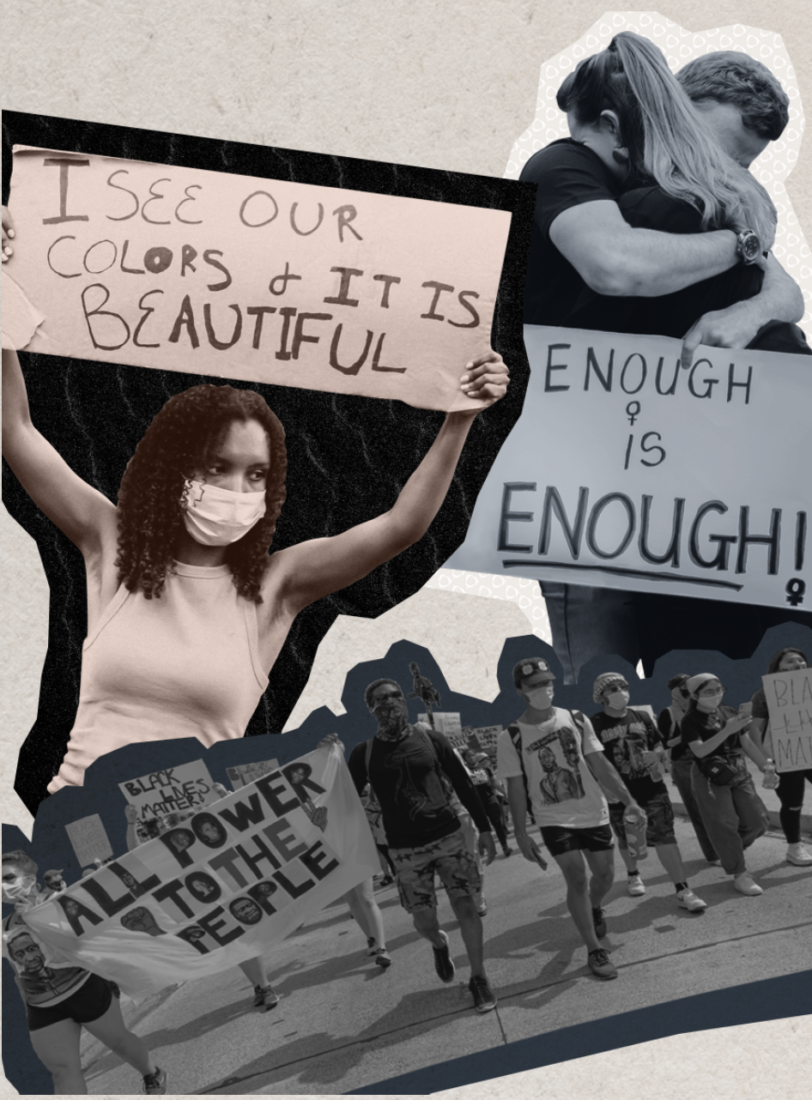Interviewees
| Name | Citation |
|---|---|
| Lana Tran, SFU HR student, former VP Operations at the Simon Fraser University Business Administration Student Society | 1 |
| Jaya Gill, SFU HR student, Teaching Assistant and Captain at the Simon Fraser University Beedie School of Business | 2 |
| Olivia Chan, SFU HR student, President of the Simon Fraser University Student Marketing Association | 3 |
| Raven Bruan, SFU HR student, Global Channel Business Development Intern at SAP | 4 |
| Jonathan Chan, UBC HR student, BCom Candidate 2023, UBC Sauder School of Business | 5 |
| Japreet Gill, UBC HR student, BCom Candidate 2022, UBC Sauder School of Business | 6 |
| Gervase Bushe, Professor of Leadership and Organization Development, Management and Organization Studies, Simon Fraser University | 7 |
| Rebecca Paluch, Assistant Professor, OBHR Division, UBC Sauder School of Business | 8 |
| Judy Slutsky, Canadian Human Resources Professional (CHRP) and Goldbeck HR Consultant | 9 |
| Henry Goldbeck, President & CEO of Goldbeck Recruiting | 10 |
| Rachel Dee, SFU HR student; Program & Events Assistant at SFU Public Square | 11 |
If you prefer, View & Download a PDF version, or continue reading below
[real3dflipbook id=”4″ mode =”normal”]Introduction
The profession of Human Resources has cemented its reputation around the globe following the unfolding of the Coronavirus pandemic. Human Resources departments across Canada demonstrated just exactly how critical a role HR plays in keeping companies strong and efficient. This herculean effort has also delivered unprecedented changes to the profession in scope, focus, and stakes.
This report reflects on the recent past and apparent future of the Human Resources field through dialogue with professionals with various perspectives in the industry, including a professor and HR students from British Columbia’s Simon Fraser University, a professor from the University of British Columbia, and a veteran consultant working across multiple industries to increase efficiency, support and encourage the workforce, and facilitate growth in medium to large enterprises.

Central to this report is the expertise of Judy Slutsky, who has worked as a CHRP for more than 28 years. Now located in British Columbia, Slutsky’s consultations took a central role in the strategic responses of her clients in the face of the pandemic. Tran, Chan, and Gill are in the early stages of their careers as HR professionals, having completed their training during the most tumultuous year in recent history. Bushe and Paluch both bring years of academic and practical research into the theory and competencies which underscore the profession. These professionals, each approaching the trade from very different perspectives, shine a light on the nuances of the field today and the many challenges facing HR departments and professionals on the horizon.
Section 1: How HR Responded to the Pandemic
As illustrated by Sue Bingham in the Harvard Business Review, Human Resources didn’t have an easy job even before the COVID-19 pandemic brought the world to a standstill.17 But when the pandemic reached its first crescendo and millions of employees were sent to work from home, a serious problem arose. This was unprecedented territory and HR professionals were on the front lines, fielding questions and crafting policies which would have immediate and material impacts on the lives of employees.
A 2019 survey from Xpert HR with LexisNexis found that 50% of HR professionals were already fighting a losing battle in their quest to upskill and kit out employees to navigate an increasingly digital work landscape.12 From confidentiality and privacy concerns to facilitating fundamental work functions like ensuring healthy and open communication, to making sure employees were, themselves, safe and healthy in a work-from-home (WFH) situation, Human Resources had their hands full.
“The pandemic has been the big story,” says Gervase Bushe. “I think for most HR professionals, it’s been incredibly hectic: the task was to quickly deal with unprecedented and complex circumstances. How do you manage the health and safety of employees in the midst of a pandemic? How do you decide who has to come in versus who can work from home and, further, what are the equity issues around that?”7

However, necessity is the mother of invention and, nationally, the real innovation on the part of HR departments cropped up in surprising places and at a surprising clip.
“[Since the onset of the pandemic], HR has had a bigger role in providing support for employees in transitioning to remote work, as well as emphasizing the health and wellness of the organization,” says Lana Tran. “The pandemic has encouraged more compassion and accommodations for employees and, hopefully, this flexibility and awareness of the importance of well-being will continue.”1
Indeed, central to the task of Human Resources departments and consultants throughout the pandemic was facilitating the very things which made work possible: remote support, empathetic and caring responses to health crises and concerns, and the facilitation of flexible work. For most, these changes came about through the familiar course of policy creation.
“There seems to have been more focus on making changes to policy-writing due to the impact of the pandemic,” says Tran.1 Gone are the days where HR policy was largely developed behind closed doors; policy and its creation has become a much more public affair. This has pushed HR as a whole to the centre of company happenings. “The role of HR in organizations has definitely shifted and become more crucial than ever before,” says Jaya Gill. “I believe there is an increased need for HR roles in organizations as HR is becoming more apparent and critical to daily operations of companies.”2
Human Resources has had to pivot its concerns to widespread and imminent challenges facing the workforce. This has, for most, manifested as what we might reflect upon as an Empathetic Turn in the course of the profession. It has also necessitated the adoption of more powerful tools. “I think the popularity of companies integrating HRIS into the workplace is increasing,” says Olivia Chan.3 HRIS, or Human Resources Information Systems, enables the automation of certain tasks to maximize efficiency. They are remarkable tools, especially for a WFH force. “HRIS related technical skills will become increasingly important to have in order to stay competitive in the HR job market.”3
“If we have learned anything from the pandemic,” says Rebecca Paluch, “it’s that the ability to be adaptable and flexible is an advantage in this economy.”8 This sentiment is echoed by Judy Slutsky. “Human Resources professionals have been tasked with a monumental uphill battle; possessing the ability to act with flexibility, speed, and consistency is crucial,” says Slutsky. “Our policies had to change incredibly quickly as work-from-home was implemented but that didn’t mean there was room to be hasty. That policy had to be solid and provide a framework for HR to set and enforce boundaries.”9
Indeed, while HR had to make use of every tool available and had to roll with punches, the core competencies which drive the profession had to remain unchanged: in an unprecedented period, HR had to swiftly design and deliver policies and support which kept employees safe and productive. To perhaps no one’s surprise, this was—and remains—a very complex task.
Section 2: Social Challenges Facing HR
Amid the economic splintering caused by the pandemic, social fracture was scoring the fabrics of many workforces. Inequality, inequity, and a lack of diversity rose to front of mind throughout 2020 as mass anti-racist movements demanding social change reached a fever pitch.
“A change I’ve noticed through 2020,” says Rebecca Paluch, “is a renewed and reinforced commitment to equity and diversity. This stems from the COVID-19 pandemic itself, but also is derived from global movements for social justice. In the ten years I have spent studying diversity and inclusion in organizations, I’ve never seen so much movement from HR.”8

This attention to social justice came in tandem with attention to employee health and safety, which are inextricable topics. “COVID-19 really highlighted these systemic inequities,” says Paluch. “We know, for example, that a greater proportion of essential worker roles are filled by racial minorities, which means far greater numbers of BIPOC were exposed to COVID-19 through the course of their work day.”8
In attempting to rectify these inequities, more companies have implemented structural change with regards to HR policy and the creation of new roles and committees. “We’ve seen an increase in roles like VP of Diversity and Inclusion, or Chief Diversity Officer,” says Paluch,” and we’ve seen the allocation of more financial resources dedicated to building support teams within organizations.”8
The knowledge that diversity, inclusion, and equity benefit businesses at all levels is not new. “We’re no longer making the case for diversity,” says Paluch. “We know that diversity improves a variety of metrics, even financial performance. In terms of corporate social responsibility, it’s appropriate for the workforce to expect human resources and leadership to deliver specific practices or policies that can actually enhance and foster climates of inclusion in organizations.”8
Another movement seeing a striking uptake across the Western world is unionization. Unlike the bloated, top heavy unions famous for strong-arming in the 1970s, the unions of the 21st century appear to be seeking balance with management. “If there is a sustained push toward unionization, it will have a huge impact on HR,” says Gervase Bushe. “When I moved to British Columbia in the early eighties, most of HR was concerned with labour relations. The union management climate was so negative and adversarial, and unions had so much power that companies were struggling to comply with demands and remain competitive.”7
For many workers, inequality in wages has only grown in recent years. “More people are living paycheque to paycheque,” says Bushe. “In the coming years, I believe we’re going to see workers try to rise up and counter pressures created by globalization which have driven wages down and prices up.”7
Union uptake has garnered more attention south of the border where the US’ wealth gap dwarfs Canada’s by some metrics.13 Union drives seem more restrained in British Columbia but that could be traced back to two progressive entities: strong labour legislation and strategic Human Resources policy.15
“When unions first came about, their objectives were better wages, benefits and working conditions,” says Judy Slutsky.9 “Today, in BC at least, legislation and HR policy takes care of many of these tasks,” adds Henry Goldbeck, President of Goldbeck Recruiting.10 In fact, according to the Business Council of British Columbia, “the union density rate, which captures the proportion of employees covered by a collective agreement, has trended downwards in B.C. for nearly three decades.”14
Anecdotally speaking, I do suspect that this downward trend is a reflection of our buoyant workers’ rights legislation,” says Goldbeck. “The more protection provided by legislation for all employees, the less incentive to join a union.”10
Human Resources takes a central role in mitigating tensions created by social pressures. Both wealth inequality and the marginalization of racial minorities (to name only two actionable challenges) have invited the intervention of mass movements and unionization. “Human Resources is the department in an organization which can create policy and initiatives to reduce inequalities in the workforce,” says Slutsky. “More than ever, HR must be engaged with the issues facing the organization’s workforce on a more individual level; this will allow for tailored, purpose built policy that serves both employees and management well in the long term.”9
Section 3: The Defining Characteristics of Good HR
Human Resources has never been a straightforward profession, but 2020 raised the bar for the industry in terms of complexity. With so many employees working from home, home and work life matrixes became fused, thrusting HR professionals into remarkably muddy waters that intertwined the needs of the company with the personal needs of employees.
“Managers are being invited into their employees’ lives in ways that they’ve never been before,” says Rebecca Paluch. “Their home life is exposed. They’re having children run around in the background. They’re having pets walk across keyboards. There is definitely more of an emphasis on a manager’s ability to balance their own work-life aspects in addition to helping their employees to manage theirs.”8
Industry professionals had to adapt, learning to write and rework policy to support a workforce that was experiencing extreme stress in the course of their altered workday realities. Many HR professionals devoted time to supporting employees in establishing new WFH setups and new routines; others were tasked with the difficult mantle of overseeing and conducting reductions in force. These processes, both central to the course of reorganizing a business in unprecedented circumstances, illuminate the defining characteristics of successful Human Resources professionals.

Perhaps as expected, the elusive and nuanced skills of adaptation and empathy top the list. “The world we work in has been changing constantly, especially since the onset of COVID-19,” says Gill, “and the need to adapt to changing employee and organizational needs is required moving forward to support organizations’ success.”2 Lana Tran echoes Gill’s sentiment. “I believe that it will be important for HR managers to be compassionate and have the ability to adapt to new or unfavourable situations,” says Tran.1 Olivia Chan, too, is in agreement, explaining, “good HR management in the future will focus more on the employees.”3
“I think it’s important that a manager has the ability to empathize, the ability to balance needs of all stakeholders, as well as understanding that while they are there to represent the company internally to the employees,” says Raven Bruan. “They should also be champions of the employees and fight their hardest to represent them to upper management.”4
After all, “individuals don’t just want a job that pays well,” says Rachel Dee, “but an organization where they feel cared for and valued in.”11
“The most important characteristics for an HR manager to have are leadership and empathy to effectively understand situations from different employee and manager perspectives,” says Jonathan Chan, “while simultaneously taking the initiative to make important decisions when necessary.”5
These quotes elucidate a common belief amongst HR professionals that successful Human Resources management is contingent upon the ability to quickly respond to the specific needs of the workforce; to act as a fair and compassionate backbone for the organization. But it’s more complicated than that.
“HR has often been the scapegoat,” says Judy Slutsky. “But that’s the nature of the work. You have to set up and enforce policies that not everyone will support.”9 This sentiment underscores Slutsky’s definition of “good” Human Resources. “In terms of empathy and supporting the workforce, HR has to take a central role,” says Slutsky. “But they must also set and enforce firm boundaries in the workplace. During the Pandemic, HR policies surrounding employee relations, working conditions and safety have been at the forefront”9
“A more traditional workplace that relies on authority and monitoring employee activity will have additional challenges with remote workforces than those who’s self management style is more attuned to success.” comments Henry Goldbeck.10
Demonstrating these rather abstract traits—empathy and adaptability—in service of a concrete goal—preparing and enforcing policy—takes a talented HR professional. Perhaps the most valuable skill for an HR professional to possess is excellent communication.
“Consistently,” says Gervase Bushe, “I have found good communication to be one of the single most important skills for an HR professional to possess because so much of the job is garnering support and gathering influence.”7
Without widespread support from both workforce and management, HR can quickly become scapegoats, hindering the progress of policy implementation. “In HR in particular,” says Bushe, “you are constantly working laterally. You don’t have formal authority over the workforce you’re seeking to impact. It depends so much more on the individual’s ability to create strong relationships with the workforce.”7
“You’re expected to deliver results,” says Bushe, “but with no authority. You must be able to understand the world of your workforce and walk in their shoes but you also need to ensure the workforce understands you and your policies. Otherwise, it will always feel like ‘us versus them.”7
Section 4: What Will Effective HR Look Like in the Future?
A year into the pandemic, the dust is slowly beginning to settle. Attitudes in business are shifting from uncertainty and nervousness to ambition and confidence. If this is the new normal, so be it. Similarly, many Human Resources departments have, by chance or by choice, found a new groove that addresses the needs of the dispersed, perhaps shaken workforce. That groove appears to include the use of more efficient analytics in administrative HR, the rise of strategic HR, and the diversification of HR roles, creating titles and responsibilities that have never existed before.
“HR today is more than just the traditional stereotype of administrative and compliance duties,” says Japreet Gill. “It is more about adding value to the organization and creating authentic, real, and meaningful relationships.”6

“I believe that further integrating HR and IT will become the new normal in organizations,” says Jaya Gill. “While these two disciplines have historically been seen as separate scopes, COVID-19 has strengthened the relationship between the two.”2 Gill concurs, explaining, “we’ve already seen a greater interest in data-driven decision-making; hence, HR professionals will be required to have strong analytical skills and become more tech-savvy in the near future.”6 Indeed, Human Resources Information Systems (HRIS) saw a very wide uptake through the course of the pandemic. Managing the administrative aspects of a workforce, including tracking and approving vacation and sick days and monitoring productivity, was vital. With so many set to continue working from home for the next several years, it will remain a critical part of HR management. Looking forward, the role of these systems is only set to grow.
“Over the past couple of decades, we’ve seen that long term employment relationships have really declined,” says Rebecca Paluch. “It’s not quite the foundation of the economy anymore. Organizations won’t expect employees to stay forever and, similarly, employees won’t expect that their organization can guarantee long term employment.”8 With higher employee turnover and more frequent recruitment, Human Resources would perhaps do well to develop HRIS for applicant and talent tracking to smooth out bumps in the course of recruitment. This is true for independent HR professionals and in house departments.
“Organizations are going to realize that the core of their value is really in their employee base,” says Paluch. “So I hope to see that, going forward, there’s more emphasis and more resources being dedicated to the workforce within the organization.”8
Management of this increasingly splintered workforce will require specialization on the part of Human Resources teams.
“In comparison to administrative HR,” says Gervase Bushe, “strategic Human Resources is concerned more with talent management. This includes answering questions like how do we create an organizational environment that brings out the best in our people? How do we develop them and how do we develop the organization? The strategic side is far more ambiguous, uncertain, volatile.”7
“The trajectory has been globalization,” adds Bushe. “That’s another reason why HR has moved into a more strategic realm; the complexity of managing a variety of cultures, understanding those differences, and being able to bridge those differences has been increasingly important.”7
As such, developing skills suited to each CHRP competency and navigating the divergent path toward administrative or strategic Human Resources, will take intentional action on the part of professionals. As our workforce continues to change, HR roles within production work, service work, and knowledge work will bring very different responsibilities and opportunities.
“Strategic HR will be very important to organizations within the space of knowledge work,” says Bushe. “In those kinds of organizations, HR has much more leverage. It’s there that you’ll see roles like Chief Talent Officer. They’ll be at the table advocating for and managing the workforce.”7
Such strategic roles have never been as prevalent as now. “These are really a new phenomenon,” says Judy Slutsky. “These new job titles allow for the diversification of the Human Resources portfolio in the workplace; what’s more, those strategic HR positions will be invited into the C-suite. They already are becoming very important players in company leadership.”9
Going forward, it will be increasingly important for HR professionals to support the company’s long term business goals and go beyond the administration of HR policies” says Slutsky, “Human Resources can be instrumental in guiding business towards a new strategic direction”.9
Human Resources as a field is shifting. If organizations would prefer to mitigate desires for employee unionization and if organizations want to attract and retain exceptional talent, Human Resources will play a critical role. Because, at the end of the day, the employee is the most important part of any organization.
No matter the course of role responsibilities, what remains is that “showing accountability, consistency, and authenticity are important,” says Olivia Chan, “in order to build trust and psychological safety in the organization.”3
“HR needs to be transparent, honest, and true to its word,” says Raven Bruan.4
“I think we’re at a point now where a lot of old models and old perspectives of talent management are either being forced to dramatically evolve or else they become obsolete,” says Paluch. “There are a lot of new practices and policies that Human Resources can implement and push boundaries with. There’s a lot of really interesting room to grow and innovate on a path in HR.”8
Conclusion
Human Resources has long been considered a field of immense value to businesses. Creating and enforcing policy, increasing company efficiencies, and ultimately saving money have long been the fundamental tasks of the HR professional. But for many years, HR has also existed in something of a vacuum: HR professionals were not on management or executive teams but also were not necessarily trusted or included by other employees. As Judy Slutsky pointed out, HR has very often acted as an organizational scapegoat.8
But today, and especially following the difficulty of 2020, Human Resources has been cemented not only as a creator of value but as a member of the team. For young professionals just beginning their careers in HR, it is essential to understand this changing landscape. HR, like many other professions, is not insulated from increasing levels of specialization and automation using tech like HRIS. However, one thing does remain certain: excellent communication, authenticity, empathy, and flexibility are the skills all HR professionals must possess in order to successfully support their organization.
Citations




